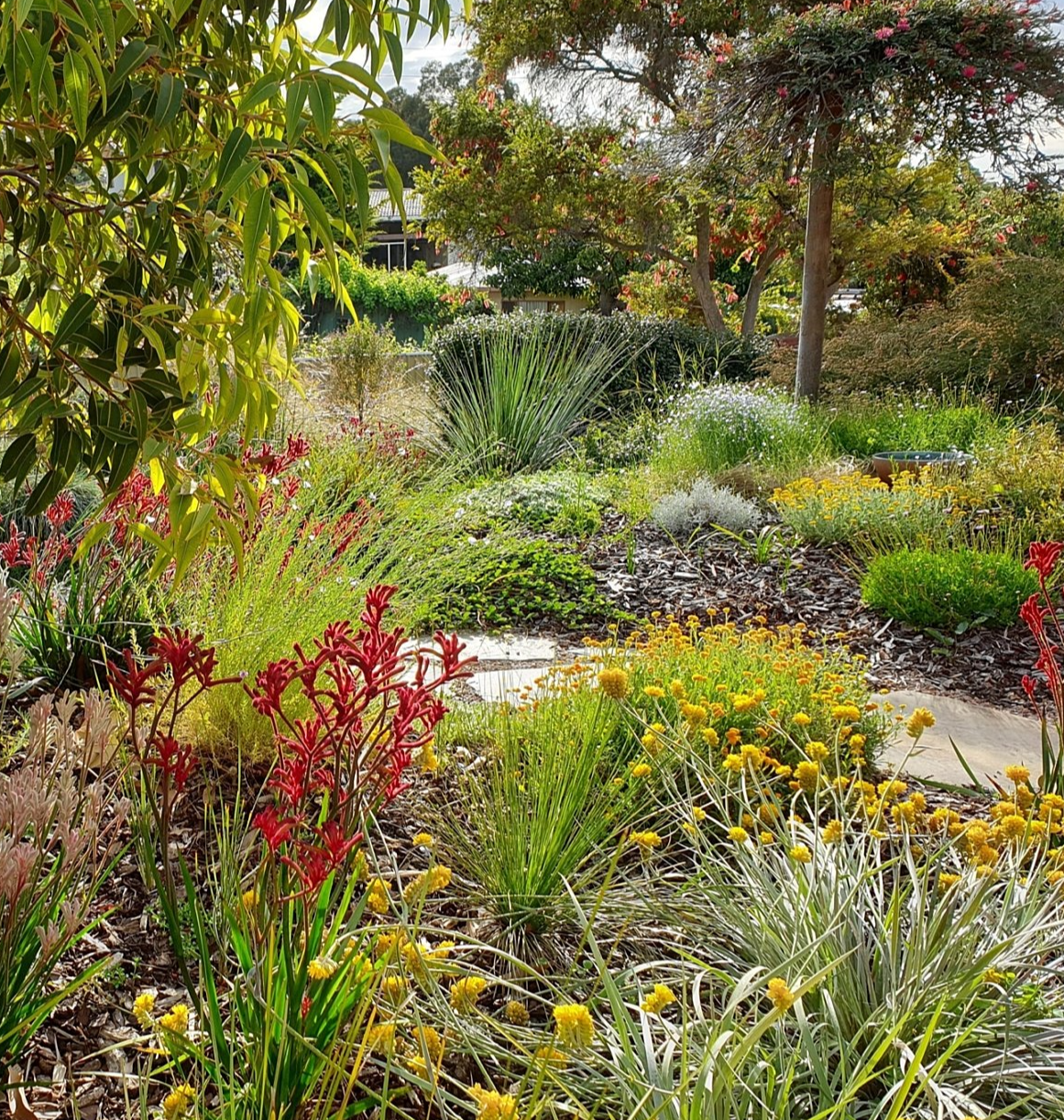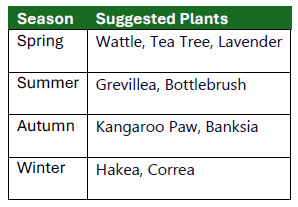
Guide to Creating a Pollinator-Friendly Garden
Transform your outdoor space into a thriving ecosystem for honey bees and other pollinators.
Why Create a Pollinator Garden?
Pollinators like honey bees, native bees, butterflies, and birds are essential for healthy ecosystems and food production. By designing a garden that supports them, you’re helping biodiversity, local food systems, and the environment.
Key Elements of a Pollinator-Friendly Garden
1. Choose Pollinator-Friendly Plants
• Select native and nectar-rich flowering plants.
• Plant in clusters to help bees forage efficiently.
• Include a variety of flower shapes and colours to attract different pollinators.
Top Picks for Australian Gardens:
• Grevillea
• Bottlebrush (Callistemon)
• Lavender
• Kangaroo Paw
• Eucalyptus
• Native daisies
2. Plan for Year-Round Blooms
Choose plants that flower in different seasons to provide continuous food:

3. Provide Water & Shelter
• Add a shallow water dish with stones for safe landing.
• Leave patches of bare ground for ground-nesting bees.
• Incorporate bee hotels or logs for shelter.
• Avoid using chemical pesticides and herbicides.
Create a Diverse Garden Space
• Include flowering herbs like rosemary, basil, and thyme.
• Grow fruits and vegetables that attract pollinators (tomatoes, cucumbers, strawberries).
• Mix flowering shrubs, grasses, and trees for habitat variety.
Tips for Success
• Avoid hybrid plants with little nectar.
• Plant native species suited to your climate.
• Let some plants go to seed — pollinators love them!
Make a Difference
Your garden can be more than just beautiful — it can become a vital part of your local environment, supporting bees, butterflies, and other wildlife.
Start today and watch your garden come alive with buzzing pollinators!
